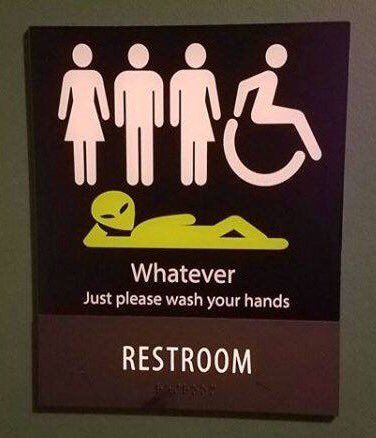Most of these images were taken from either Facebook, Reddit, or Instagram. I tried to stick to memes as the main format for my images because I felt like there would be a lot of them and I wanted consistency throughout the images for easier comparison.
The first and 3rd pictures for Identity supported are some friendly sorts of memes playing at some hot issues when it comes to gender. The middle one isn’t as much of a meme but more-so an example of how people have used things like stories on social media to spread awareness. All of these pictures are in support of people making their own choices when it comes to the identity of gender. None of them have malicious intent and none of them are potentially harmful to anyone.
It wasn’t as difficult to find pictures which were unsupportive of this identity, most likely because it’s an easier, less creative route to making some people laugh, so people choose to make these more harmful memes. The first two are examples of gender being portrayed negatively and teasing at the idea of gender being up to the individual.
For part 2, I chose to look at the Bitmoji avatar creation and what it allows you to do. Bitmoji allows you to create an avatar which can pretty much be anything from what I recall. You can have colored skin, antennas, horns, wear costumes, or you can make it look exactly like yourself. Weirdly enough most people, from my experience, end up creating a Bitmoji which replicates their physical traits accurately. It’s interesting to analyze this, because we live in a world where people are constantly obsessed with their dreams and being something better or different than what they currently are. Yet, when people are tasked to create some virtual version of themselves, they choose to make it a mirror replica of their real life self. It’s very interesting because Bitmoji will offer you a large set of new emojis which are depicting your virtual self in any possible mood or having any possible reaction. This can create a kind of effect of falsely amplified emotion perception, where people are sending an ecstatic jumping picture of themselves, but in reality are sitting down on their phone emotionless. It’s interesting to see if this separation of real and virtual emotions will continue to grow, and how it will effect the relationships between humans.







You must be logged in to post a comment.